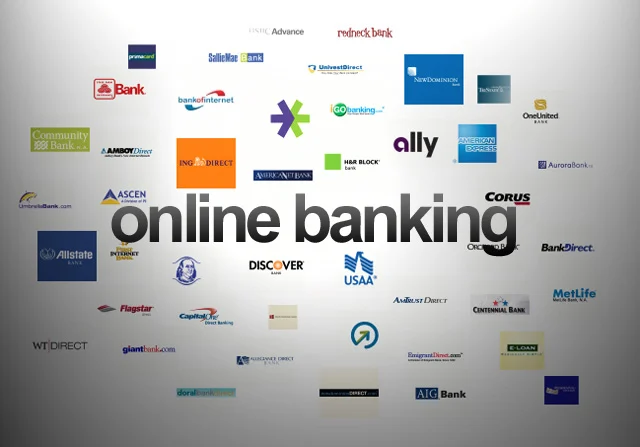Online banking has revolutionized how we manage our finances, offering the convenience of banking from anywhere, at any time. However, with the growing reliance on digital services, questions around security and the safety of online banking have become more prevalent. So, is online banking safe? The short answer is yes, but like any financial service, its safety largely depends on the security measures in place, your habits, and how well you follow best practices.
How Banks Ensure Online Banking Security
Most banks take significant measures to protect their customers’ data and financial transactions. Some of the key security features include:
- Encryption
Banks use encryption technology (such as SSL/TLS) to protect the data transmitted between your device and the bank’s servers. Encryption ensures that any sensitive information, like login credentials and financial transactions, cannot be intercepted or read by third parties. - Two-Factor Authentication (2FA)
Many banks use two-factor authentication to provide an additional layer of security. In addition to your password, you may be required to enter a one-time code sent to your mobile phone or email. This makes it much harder for hackers to access your account even if they manage to get hold of your password. - Fraud Detection Systems
Banks use advanced fraud detection algorithms to monitor your account for unusual activity. If a suspicious transaction occurs (such as a large withdrawal or a transaction in an unfamiliar location), the bank may block the transaction and contact you for verification. - Secure Banking Apps
Reputable banks develop secure mobile banking apps that offer built-in security features, such as biometric logins (fingerprint or facial recognition) and automatic logouts after a period of inactivity. - Regular Security Audits
Banks continuously perform security audits and vulnerability assessments to ensure their systems are protected against potential cyberattacks and data breaches. - Data Breach Protection
Many banks offer protection against data breaches, such as identity theft monitoring services, which can alert you if your personal information is compromised.
Risks Associated with Online Banking
While banks have strong security measures, online banking does come with some risks, primarily related to human behavior and external threats. Let’s look at some common risks:
- Phishing Attacks
One of the most common ways fraudsters steal personal information is through phishing. In a phishing attack, criminals send emails or texts that look like they come from your bank, asking you to click on a link and enter sensitive information, such as your username, password, or credit card number. Tip: Always double-check the sender’s email address and avoid clicking on links or opening attachments in unsolicited emails. Instead, go directly to your bank’s website by typing the URL into your browser. - Weak Passwords
Using weak or common passwords is one of the easiest ways hackers gain access to accounts. If your password is easy to guess or you use the same password across multiple sites, your online banking account is at risk. Tip: Use strong, unique passwords for your online banking account, and enable two-factor authentication whenever possible. - Public Wi-Fi Networks
Public Wi-Fi networks, such as those in coffee shops or airports, are not secure and can be exploited by hackers to intercept your data. Logging into your bank account while on public Wi-Fi increases the risk of someone accessing your personal information. Tip: Avoid accessing your bank account while on public Wi-Fi. If you must, use a VPN (Virtual Private Network) to encrypt your internet connection. - Malware and Viruses
Malware, such as keyloggers and viruses, can be installed on your computer or smartphone through malicious links or downloads. These can track your keystrokes and send your login credentials or financial information to hackers. Tip: Keep your devices protected by using antivirus software and regularly updating your operating system and applications to patch any vulnerabilities. - Social Engineering
Cybercriminals can sometimes trick individuals into giving away personal information through social engineering tactics. For example, they might impersonate a bank representative over the phone and ask for account details. Tip: Always be cautious when providing sensitive information. Legitimate banks will never ask for your full account number, PIN, or password over the phone.
Best Practices for Staying Safe with Online Banking
To make sure your online banking experience is as secure as possible, follow these best practices:
- Use Strong and Unique Passwords
Ensure that your banking password is complex (with a mix of letters, numbers, and symbols) and unique to your banking account. - Enable Two-Factor Authentication
Always enable two-factor authentication (2FA) if available. It adds an extra layer of security beyond just your password. - Monitor Your Accounts Regularly
Regularly check your account activity for unauthorized transactions. If you notice anything suspicious, report it to your bank immediately. - Log Out After Use
Always log out of your online banking account when you’re done, especially when using shared or public computers. - Update Your Software
Keep your operating system, browser, and banking app up to date. Software updates often include important security patches. - Be Cautious with Emails and Links
Be careful about emails or text messages claiming to be from your bank. If in doubt, contact your bank directly using official contact details. - Use Secure Wi-Fi
Only use private and secure Wi-Fi networks when accessing your bank account. Avoid using public Wi-Fi for financial transactions unless you are using a secure VPN.
Conclusion: Is Online Banking Safe?
Yes, online banking can be safe if you and your bank take the necessary precautions. Banks invest heavily in cybersecurity measures to protect your data, and they often offer tools to help monitor and safeguard your accounts. However, it’s essential to be vigilant and follow best practices, such as using strong passwords, enabling two-factor authentication, and being cautious of phishing attempts and malware.
By staying aware of potential risks and making informed choices, you can greatly reduce the likelihood of falling victim to fraud and enjoy the convenience of online banking safely.

